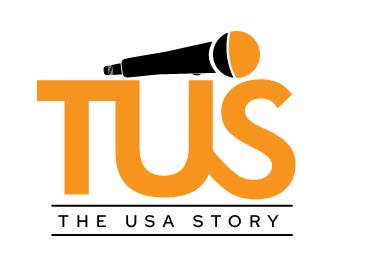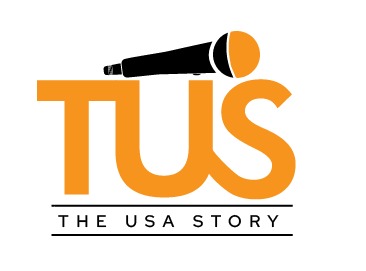Stay fit and healthy with these recommended exercises for men. Discover the best exercises to incorporate into your daily routine for optimal health and wellness.
Guys, be sure to include strength training in your exercise regimen.
Regular physical activity is important to maintaining good health. According to federal guidelines, adults should engage in at least 150 minutes (2 hours and 30 minutes) of moderate-intensity or 75 minutes (1 hour and 15 minutes) of vigorous-intensity aerobic activity each week. Moderate-intensity activity includes activities such as brisk walking, hiking, water aerobics and dancing.
The guidelines also recommend that adults do moderate or more intense muscle-strengthening activities that work out all major muscle groups two or more days a week.
Strengthening exercises won’t just help your game on the softball field or the tennis court. Research suggests that strength training can protect you from chronic diseases and potentially extend your life, as well as lower your risk of cardiovascular disease, certain types of cancer and diabetes. In a July 2022 review published in the British Journal of Sports Medicine, researchers found that muscle-strengthening activities were associated with a 10% to 17% lower risk of all-cause mortality.
Building muscle isn’t just for bodybuilders. In fact, it’s an important part of healthy aging. After age 30, people naturally lose up to 3% to 5% of muscle mass per decade due to sarcopenia, a degenerative loss of muscle mass associated with aging. Over a lifetime, most men will lose about 30% of their muscle.
While there’s no fountain of youth or time machine to reverse the aging process, strengthening your muscles with exercise – particularly resistance training or strength training – can help you counteract age-related muscle loss and increase your muscle mass as you age.
In addition, exercise helps build and maintain bone mass and density. This is especially important as you get older. Research shows it also improves brain health.
“The stronger your muscles are, the less likely you are to fall down and break bones,” says Fairfax Hackley, a personal trainer based in Fairfax, Virginia. “That will help your longevity. The more muscle you have, the more fat you burn. That makes your body more metabolically efficient.”
Hackley recommends that men develop a varied exercise routine. Everyone is different, and not every type of exercise will appeal to each individual, so it’s a good idea to have an array of workouts to choose from on a daily basis. Fortunately, you don’t need expensive equipment, like a treadmill or an exercise bike, to engage in exercises that will boost your health.
12 exercises men should do every day:
- Bodyweight squats.
- Forearm planks.
- Burpees.
- Chin-ups and pull-ups.
- Heel raises.
- Jumping jacks.
- Low-impact exercises.
- Pushups.
- Resistance training.
- Ski flier.
- Team and individual sports.
- Yoga and stretching.
-
Bodyweight squats
Bodyweight squats are an excellent way to work out multiple parts of your body without any equipment, including your:
- Calves.
- Core.
- Gluteal muscles.
- Hip flexors.
- Lower back.
- Hamstrings.
2. Pushups
If you’ve ever watched a movie set in a military boot camp, there’s a good chance that an intense drill sergeant will at some point bark at a recruit: “Drop and give me 100!”
“The military uses pushups as a great upper body functional movement to develop strength, resilience, stamina, endurance and great core strength,” Hackley says.
Of course, you don’t need to be a soldier to benefit from pushups.
Pushups are an excellent workout for your abdominals, chest and lower back. Plus, one of the great things about pushups is that you don’t need any equipment, and you can do them virtually anywhere, indoors and outdoors.
3. Forearm planks
Love them or hate them, planks are a great exercise to strengthen your core.
“They’re great for increasing spinal stability, which can be helpful with mitigating back pain,” says Nick Balestriere, a health coach at the age management medical office of Cenegenics located in Boca Raton, Florida.
4. Burpees
Burpees are a full-body exercise that can be part of a warmup routine, a main workout or a way to finish your workout, Hackley says. They’re relatively low-impact, so they’re easy on your joints and feet. This exercise helps boost your muscle tone, strength and flexibility and is also a good way to burn calories.
Burpees strengthen various muscles and body parts, including your:
- Abdominals.
- Calves.
- Deltoids.
- Glutes.
- Hamstrings.
- Lower back.
- Pectorals.
- Quadriceps.
The burpee essentially combines three exercises into one fluid movement: squat, pushup and jump.
5. Chin-ups and pull-ups
Chin-ups and pull-ups are similar exercises that can help you build your upper body muscles, specifically your arm, back and shoulder muscles.
In both exercises, you grab a horizontal bar and pull your body up, but the primary difference in how you execute each exercise is in the grip. To do a chin-up, you’ll grab the bar with your palms facing toward you. To do a pull-up, you’ll grip the bar with your palms facing away from you.
For many people, the chin-up is slightly less difficult to execute because it’s easier to use the muscles in your shoulders, arms and forearms than when you are doing a pull-up.
Chin-ups and pull-ups are part of the training regimen for many weightlifters, but you don’t have to pump iron regularly to benefit from these exercises.
“Pull-ups and chin-ups are one of the best upper-back exercises one can do,” Hackley says. “Mastering one or both exercises will build awesome strength. They are great exercises for functional movement, and can be done anywhere one has access to a horizontal bar.”
As to which is preferable, it depends on your goals, Hackley says. Chin-ups place more emphasis on building up your biceps and pecs, while pull-ups accentuate your back and shoulder muscles; however, both forms of exercise will benefit all of those muscle groups. Some people will struggle to do one chin-up or pull-up at the beginning, while others may be able to do 50 or more. The more you do, the stronger you will be, and the more you’ll be able to do.
6. Heel raises
For an array of reasons, it’s important to keep your calf muscles strong, says Adrian J. Llañez, a physical therapist based in El Paso, Texas.
Calf muscles have several important functions, including:
- Aiding in proper walking mechanics.
- Supporting ankle mobility.
- Assisting with balance.
- Promoting circulation.
Calf strengthening activities are simple to perform and can help reduce the risk of injury, improve mobility and promote a healthier lifestyle.
7. Jumping jacks
Functional exercises – like jumping jacks – can help train muscles that are used for everyday life, says Jenn Costin, a certified personal trainer based in Madison, Wisconsin.
“Functional training is key for us to live injury-free lives and to keep up with the demand of physical requirements for our day-to-day activities,” she says. “Some ways to incorporate training in a gym setting would be to add in some jumping and bending movements. By practicing movements that can easily translate to everyday life we help to create body awareness, build strength and – most importantly – avoid injuries.”
8. Low-impact exercises
Low-impact exercises can be an important part of a man’s daily exercise regimen, says Jamie Costello, a certified personal trainer and vice president of sales and fitness for the Pritikin Longevity Center in Miami.
Such activities include:
- Walking.
- Bicycling.
- Swimming.
- Kayaking.
One of the good things about these exercises is that they can be performed with a low level of intensity or effort and still be effective for building endurance, while keeping your knees and other joints safe and healthy. These exercises can also help keep your heart healthy.
“The most important element is that you’re moving throughout the day and every day,” Costello says.
9. Resistance training
Resistance training should be part of everyone’s exercise regimen, says Jonathan Jordan, a certified personal trainer based in San Francisco.
“Whether you want to be lean, toned, ripped or strong, resistance training is key for maintaining a healthy body composition, mobility and vitality,” Jordan says.
At the gym, he suggests using machines that allow you to do pulling movements, like the seated row machine or lat pull-down machine.
Other resistance training exercises include:
- Bicep curls.
- Chest press.
- Lying lateral leg raise.
- Barbell squats.
Resistance training is easy to squeeze into your daily routine, even if you’re on the road and don’t have access to weightlifting equipment. You can do an array of exercises using inexpensive resistance bands, or suspension straps, which you can store in your luggage if you’re traveling.
10. Ski flier
Eric Cohen, a CrossFit Level 1 trainer and co-founder of the walking app 99 Walks based in Sag Harbor, New York, recalls that a friend once told him that success is made at the margins. This concept applies to exercising to reach health goals.
“Sure, the big (exercises) – squats, deadlifts, the bench press and pull-ups – are important,” Cohen says. “But adding a few small movements will amplify the gains.”
An exercise Cohen calls the “ski flier” is one of the small movements that can help you reach your fitness goals. It’s similar to the stance ski jumpers take as they fly off the ramp.
“It’s a simple move, best done in bare feet,” Cohen says.
11. Team and individual sports
Getting a good cardio workout is important for men of all age groups. Sweating it out for 20 to 40 minutes on the treadmill or elliptical at a slow to moderate pace might be the only kind of cardio you’re familiar with, but it won’t necessarily optimize your metabolic rate – or how well your body burns calories, says Balestriere.
“Even highly conditioned athletes can lose their optimum performance capacity if they don’t maintain a good daily cardio exercise regimen,” he adds.
Playing a team or individual sport is an effective way to get in your cardio, especially if you tend to view gym workouts as a chore. If you’re a basketball fan, a tennis aficionado or a volleyball lover, you can work up a healthy sweat and have fun at the same time. If you play a team sport, you’ll get the added benefit of camaraderie with your fellow competitors.
12. Yoga and stretching
Stretching and breathwork are more important than many people realize.
“A lack of deep breathing really begins to exacerbate other problems in the human body,” Hackley says.
To improve your breathing and flexibility, consider taking a yoga class. During intense yoga workouts, your breathing tends to slow down, as opposed to speeding up like it would during a brisk cardio routine. In addition to training your body to breathe, you’ll also stretch tight or unused muscles. This is important because inflexible muscles can lead to lower back problems, tightness and muscle tears.
Research suggests that practicing yoga provides an array of health benefits. In an April 2022 meta-analysis published in the journal Pain, researchers evaluated 27 studies involving 2,702 participants and found that practicing yoga helped alleviate low-back pain and boosted mental health and physical functioning.



